 | Blog Tips to Help You Make Money Blogging - ProBlogger http://www.problogger.net рекомендовать друзьям >> |
- 3 New Tools That Can Help You Create Better Content, Convert More Readers and Conquer Higher Search Rankings
This guest post is by Neil Patel of Quick Sprout.
Anybody can be a content marketer … but not everyone can be a good or even great content marketer who creates articles that convert and rank high in the search engines on a consistent basis.
Over time experience will teach you how to do this, but you also need the right tools.
You need tools that will help you spot the hot topics at that very moment, generate list upon list of high-converting long-tail keywords, automate some of your processes, and even show you the best places to publish your content.
In the last several months four very cool tools have come onto the scene that will help you do just that. Eric showed us one of them—the Content Strategy Generator Tool—earlier today, but I wanted to show you three others that are definitely worth experimenting with.
IFTTT: Automate your content curation tasks
 Your first experience of IFTTT may seem a bit like a head-scratcher. That's why IFTTT has given you some very specific "recipes" to add.
Your first experience of IFTTT may seem a bit like a head-scratcher. That's why IFTTT has given you some very specific "recipes" to add.What exactly is a "recipe"?
That's just a set of commands to perform an action when certain conditions are met. That's what the acronoym means: If This, Then That.
How can this tool help you create compelling, high-converting content? It will basically automate tasks that you normally do.
For example, Evernote is the ultimate tool bloggers use to save ideas we come across on the web. Even though the steps to save that content to Evernote are pretty simple, wouldn't it be nice to accomplish two tasks in one—and even eliminate some steps in the process?
Standford Smith recently shared his favorite IFTTT recipes that make content curation painless:
- Save a starred item in Google Reader to Evernote.
- Save a specific keyword in an RSS to Evernote.
- When you favorite a tweet, save to Evernote.
- Save tweets by specific users to Evernote.
- Add specific keywords that appear in your Twitter stream to Evernote.
- Add "Watch Later" video to Evernote.
- Add posts in Google Reader to a specific Evernote notebook.
When curation tasks like these are automated for you, you can concentrate on creating better content that will convert more readers and rank higher.
Übersuggest: the keyword search tool on steroids
If you want a keyword search tool that will help you build a highly relevant and targeted list of long-tail keywords, then you need Übersuggest.
It combines Google Suggest with other services, and it's simple to use. Just write a keyword in the box, choose a language, and get suggestions.
You can break these down into just normal web searches, or you can look for terms in verticals like video, shopping, and news. If you click on one of the keywords it then delivers even more suggestions:
There are literally thousands of content ideas you could get from these real user queries.
Click the plus sign and this will put the keywords in a bucket:
After you've selected a few more keywords, you can then click "Get" and then copy and paste these keywords:
If you want to take this idea a step further, throw out all those keywords that won't work for you. Those remaining drop into Google's keyword suggestion tool.
From that list you can grab the hottest trending keywords and create some high-converting content that also ranks well.
Google Insights: 4 ways to boost your content conversion rates
In its most basic use, Google Insights for Search is great for seeing what people are searching for using broad terms, or narrow ones.
But as a content marketer, you are looking to use Google Insights to help you create highly-targeted content that will boost your conversion rates.
Google Insights offers four ways to do that, using its filters. The first filter we’ll look at is the Web Search.
The Web Search filter
Let's say you’re a real estate agent in Seattle. You are looking to create some articles for your blog, but you are tired of talking about home prices and want some fresh and relevant topics to discuss.
To keep the content tight and focused on your market, you can filter the content to your region and restrict results to those from the last three months. Then, choose "real estate" as the category.
Note: Leave the "Search terms" box blank if you want to see what’s trending.
This is what you could see:
What you care about here are the Rising Searches and the Breakout search terms.
As you can see, when I did this search, the "Trayvon Martin case" was a hugely popular term in the real estate category. Perhaps you could create some fresh content around issues like the pros and cons of living in a gated community, or a guide to creating a voluntary Neighborhood Watch program. Both are highly-qualified topics that could rank high.
The Image Search filter
The next filter you can use to generate some high-converting content ideas is Image Search. This time you will enter some search terms.
Let's say you’re a graphic designer and you want to see what's trending among images. You choose "book covers," "email newsletters," and "desktop."
Your results will show you that the email newsletter topic is flat-lining, but the desktop topic is flying high!
That means you need to roll up your sleeves and focus your content on a topic like desktop design. If I were you, I’d use the CSGT or Übersuggest to generate some very refined keywords that will attract that right people and convert well for you.
The News Search filter
The third filter to try is the News Search. This is another one that works really well if you leave the search terms box blank.
Imagine you are a blogger who covers technology, so you enter a search in the News. You make it a worldwide search in the last 90 days, and select Computers & Electronics.
Your results will look something like this for that time range:
Notice how Apple dominates the top six spots, but doesn’t hold place two and four? Those offer some interesting possibilities for content creation.
For example, "anonymous" refers to the hacktivist group Anonymous—you may want to cover their latest efforts. And the "galaxy s3" refers to the latest rumors about this smartphone. Perhaps you can follow that as a possible story idea.
Either way, these will be hot, trending topics that could help you land some heavy traffic!
The Product Search filter
The last filter we’ll look at is the Product Search filter. Anyone who sells anything can use this—and it doesn't have to be a physical product. It could be an information product or even a service.
Say you have a blog from which you sell stock buying information in the form of email alerts, and you want to relate something back to one of your products.
Search "worldwide" and "finance" without putting anything in the "search terms".
Here’s what you will get:
Because it was tax season when I ran this search, most of the searches were around the topics of taxes. But what is sr22? And why is it breaking out? Click on it and you get this report:
This is important, because the “sr22″ search term can refer to a number of things, including insurance, pistol, or an airplane.
These particular searches, however, are focused on finance, which should give us a clue that this topics is probably about insurance. The subcategory tells us that it is most definitely about insurance.
Click on "Insurance" and you'll see that sr22 is a specific kind of auto insurance. Now you can create content around sr22 auto insurance, and then tie it back into one of your products, capturing the attention of—and hopefully some conversions from—highly-relevant traffic.
The blogger’s favorite tool/s
In the end, if you want to succeed as a content marketer, then you need to know what type of content is working, what topics are trending well and which keywords are relevant to your context. The tools above will help you find that out.
These tools as they are your key to creating content that not only ranks well but converts readers into subscribers or customers.
Are there any other new tools that I missed that will help a content market create better content? Share them in the comments.
Neil Patel is an online marketing consultant and the co-founder of KISSmetrics. He also blogs at Quick Sprout.
Originally at: Blog Tips at ProBlogger


Переслать - The Must-have Blog Post Topic Generation Tool
This is a guest post by Eric Siu of Evergreen Search.
Ideas are the beginning points of all fortunes—Napoleon Hill
Unfortunately, sometimes it’s very hard figuring out how to come up with blog post ideas. And based on that quote, if you can’t come up with ideas, then it doesn’t look like you have a starting point from which to create a fortune.
Over the years, many different aggregators and tools have become standard ways to generate post topics. Some people might use Quora or Yahoo Answers to look for problem-solving topics. Others might use Twitter or news aggregators to check for trends. All these tactics are effective, but it can be difficult to track everything at once.
What if there was an all-in-one tool that could combine these tactics into one, so you didn’t have to painfully click around anymore?
Enter: the Content Strategy Generator Tool (CSGT) by Daniel Butler of SEOgadget.

What is the Content Strategy Generator Tool?
The CSGT is a Google Docs spreadsheet that utilizes importXML functions to pull various data around the web for content brainstorming. That content doesn’t have to be restricted to blogging—the tool can be used to research videos, infographics, or audio.
With this tool, you can spot trends, get great headline ideas, come up with your own spin on topics, view new keyword opportunities, and more—and all in one spot. Talk about saving time!
Setting it up is a matter of completing a few steps:
- Get the tool here.
- Make a copy in Google Docs (File -> Make a Copy)
- Enter your keyword in cell B3 (for multiple keywords, using the ‘+’ operator e.g. pet+stores).
- Sit back and watch the magic happen.
What’s inside
The spreadsheet itself can display quite a bit of information. This section will break down the different types of data that is pulled into the sheet so you can begin to formulate a strategy on how you’d like to use it.
News
CSGT pulls news from Google News and Bing News. For Google News, three columns in the spreadsheet give you the title, author and time posted, and a description of the article. For Bing News, you’ll find two columns: one for “best match,” and one for “most recent” articles. This gives you the flexibility to dig through all the latest topic-related news on Bing.
Digg and Reddit are also included in the sheet. Similar to the information it provides on Bing, the sheet will display “most dugg” and “most recent” data from Digg. It will show you the top posts only from Reddit.
Social Media
If you’re looking for video content ideas, you’re in luck: CSGT also displays the top videos from YouTube related to your search.
Topsy, which is a great tool for displaying trending tweets, shows you the latest tweets in the last day as well as the top trending tweets. You’ll also see the usernames, author names, tweets, times of tweets, and number of retweets for each trend. Twittorati Search will pull in more tweets from the highest authority bloggers, and display the user and Twitterati Authority as well.
Facebook isn’t left out, either. AllThingsNow pulls the hottest Facebook shares for the day into the spreadsheet.
Aggregators
CSGT also pulls in topics from various aggregators like Blog Catalog, Fark, Redux, Helium and Cracked.
These sites are all different in their own ways and, at the end of the day, add more diversity to the scope of topics being presented to you. Perhaps you might look at Cracked and come up with a funny spin on a niche topic—anything could happen!
Q+A Sites
The benefit of having Yahoo Answers in the spreadsheet is that this data shows you popular problems that people are actually having right now.
Yahoo Answers will pull the most-answered questions related to your query, and display them for you. You can then go to Google and search on those specific questions. If the answers on the first page aren’t that good (and you think you can do better), you may just have picked up something to write about.
Miscellaneous
Uber Suggest is an excellent keyword suggestion tool and CSGT brings it right to the sheet so you don’t need to go to the website to find suggestions for other relevant keywords that you can target.
Google Insights will show you what the top and rising searches are in your niche.
And finally, How Stuff Works results will give you ideas for potential how-to content that you can generate.
Source and Place
That’s not all, though—the Source and Place tab will tell you how to find the top Twitter experts, bloggers, and editors in your niche. Use this to figure out who you can follow—and start new relationships with.
How to use the tool
Whenever you are stuck or want to spot trends on a subject, just pop open this tool and enter a topical keyword into cell B3. You can use modifiers to do some more digging, but the bottom line is that this is a great starting point for any content campaign.
At the end of the day, the main benefit of the Content Strategy Generator Tool is to save you time while giving you more ideas. The simplicity and the fact that it’s free makes this tool a must-have for any content creator.
Have you used the CSGT yet? Did you find it useful? Tell us what you thought of it in the comments.
Eric Siu is the Vice President of SEO at Evergreen Search, a digital marketing agency in los angeles. He’s also written about Minimum Viable SEO: 8 Ways To Get Startup SEO Right and 10 Immutable Laws of SEO. In his free time, he likes watching football, playing poker, hiking, reading, or eating ice cream. Feel free to follow him on Twitter( @ericosiu) or on Google+:+Eric Siu
Originally at: Blog Tips at ProBlogger

The Must-have Blog Post Topic Generation Tool

Переслать - What Makes Good Content Marketing Great?
Content marketing—using content to promote our product or service—is a favorite promotion method of today’s bloggers. Many of us are in the content business, so content marketing makes sense.
The activities that come under the umbrella of content marketing are broad. They cover everything from guest posting to uploading content to purpose-built networks (like YouTube or Soundcloud), to offering your own free, downloadable content products on your own blog.
Content marketing opportunities are, literally, limited only by your imagination. But this isn’t to say that all content marketing is good content marketing. Or that all strong content marketing is as great as t could be.
What makes good content marketing great?
The answer to this question depends on your blog, target audience, and the content marketing goals you’ve set yourself. There’s not really a one-size-fits-all solution, though as we know, some solutions are used more commonly than others.
However, if you’re looking at new ways to use content marketing to promote your blog, these are some of the main factors you’ll probably want to think about before you jump in.
Does the opportunity support your brand values?
When we’re promoting our blogs, we’ll often look for the opportunity that gives us the biggest bang for buck. For example, we’ll aim to have our guest posts published on sites that have larger readerships rather than on those with smaller audiences.
While that’s fine, it’s also important to look at the outlet itself, and see whether it supports your brand effectively.
For example, both my Digital Photography School and ProBlogger brands use image content. So, in theory, I could use that content to market both brands on Pinterest. While the content is highly appropriate for the outlet, it’s easy to see that Pinterest is more closely aligned with the brand values of a visual brand like dPS than it is with those of ProBlogger.
While Pinterest could be a good way to market both brands, it’s a no-brainer for dPS. IF only I had time to be active on Pinterest!
Is the format appropriate?
There’s sometimes a tendency among some content marketers to jump on whatever bandwagon comes by—whether it’s creating video, or publishing a free blog manifesto, or something else.
The thing is that not all formats for content marketing are going to be appropriate for you. Let’s look at video. If you don’t use video on your blog, and have never made a video, then creating videos just to market your blog may not be the best idea. It may well take you a lot of time, and since you’re not experienced with the format, the content you produce may not be of a level of quality that supports your brand as best it could.
This isn’t to discourage anyone from trying something new—it’s just that you can make content marketing as difficult or as easy as you like. Embarking upon a brand new format purely for marketing purposes is going to be time-consuming and challenging. And the results may not do as much for your blog as you hoped, especially if (tying in the point above) the format doesn’t complement your blog’s branding.
Does the content offer a doorway into your blog?
In some ways, content marketing is like providing free samples of your product, so it’s important to make sure the content you use is a fair representation of what your blog offers. If you create a great video to promote your blog, but the blog itself contains no video, then you may risk disappointing the new visitors who were attracted specifically by your promotional video.
However, this issue goes deeper than formats. Look at what you’re communicating through the content marketing piece, and consider whether that message a) resonates with new readers and b) reflects a core characteristic or value of your blog.
Once the reader consumes that promotional piece, and arrives at your blog, is there a natural pathway for them to follow to engage more heavily with your blog on the basis of the expectation that your content marketing has set?
I’m not just talking about a conversion funnel here—I’m talking about an emotional and intellectual sense of engagement. That process may be upset if your promotional content looks different, sounds different, or delivers differently than your blog does. Consistency of message and tone is as important as consistency of look and feel and formats.
Is the content targeted to the audience?
Any potential content marketing outlet will have an audience. Does that audience reflect a market that you want a foothold in? And does your content speak to that audience?
This consideration is particularly important if you’re repurposing existing content for an outlet whose audience is slightly different from your own—and that’s likely to be the case with most content marketing opportunities.
To be successful, your content marketing efforts will require you to micro-target your brand and message to new audience sub-segments. So simply rehashing the same content over and over in different formats or outlets probably won’t be as effective as targeting each communication to each specific opportunity and its particular audience.
That means more work for us, but also a better return on the investment we make, in terms of time and effort, to promote our blogs.
Does the content provide real value in and of itself?
What constitutes “value”? The answer to that question lies with your target audience. A recent, very successful content marketing effort by CollegeHumor.com makes that point—here, value is measured in terms of laughter and fun. For your brand, “value” might mean practical outcomes, inspiration, or something else.
The important thing is that the content you’re using in your content marketing strategy provides real value. That’ll get it shared more often, backlinked more often, and more search traffic than lower-value content that exists merely to beat your own drum. Also, high-value content is likely the only kind that will meet the points we talked about above.
Your content marketing plans
As I said, the possibilities for content marketing are almost endless, but the factors I’ve touched on here are among those that make good content marketing really great. Which ones are you using, and which have been the most successful for you? Share your experiences with us in the comments.
Originally at: Blog Tips at ProBlogger

What Makes Good Content Marketing Great?

Переслать - Early Bird Tickets On Sale for Melbourne ProBlogger Event – #PBEVENT
 Over the last few years I’ve hosted 2 events here in Melbourne for bloggers. What started in 2009 as a quickly pulled together and very cramped and crowded event for 150 bloggers has grown considerable.
Over the last few years I’ve hosted 2 events here in Melbourne for bloggers. What started in 2009 as a quickly pulled together and very cramped and crowded event for 150 bloggers has grown considerable.Today tickets have gone on sale for our October Event and it is going to be big – both in terms of attendee numbers, venue and what we’re setting out to achieve.
This year’s Problogger Training Event will be held over 2 days at Melbourne’s Etihad Stadium (or rooms within the stadium). The dates are 12-13 October.
Great Speakers
The majority of our speaker lineup is from Australia’s amazing blogging community (we have some innovative and entrepreneurial bloggers here) but we’re also flying in Chris Guillebeau to bring a little international flavour. Chris will be presenting twice – once as a keynote and once in a workshop.
Other speakers and panelists include myself (I’ll be involved in 3-4 sessions), Sarah Wilson, Shayne Tilley (Web Marketing Ninja and regular contributor here on ProBlogger), Nicole Avery, James Tuckerman, Jules Clancy, Stan Lee, Mrs Woog Valerie Khoo and a load more (see the full list of confirmed speakers and panelists here).
A Focus Upon Building Profitable Blogs
The focus of this year’s event will be much more upon monetization and building profitable blogs. While we’ll touch on some more general topics in the course of the event the feedback from last year was that attendees wanted training on how to monetize.
As a result we’re featuring sessions that are very much on the topic of making money through a variety of methods. This will include sessions looking at the different models available to bloggers, advertising and working with brands, eBook creation, courses and membership areas, selling your services, sponsored posts and much more.
Solid Training
The style of teaching at this event is a combination of keynotes, panels and interactive sessions. However based on feedback from last year we’re including more ‘keynote’ presentations than previously to allow for more intentional ‘training’ and leading attendees through processes.
While there will be plenty of time for networking, discussion and a little fun at this years event – the feedback from our 2nd event last year was that we’d put on the most solid ‘training’ event in Australia for bloggers – we only want to strengthen that.
My intent for this event is that bloggers not only walk away with theoretical teaching but practical advice and strategies that they can go away and implement.
You can see our preliminary schedule here.
Secure Your Tickets Today
Tickets for the event this year will be price at $299.99 (AUD) but we currently have a limited number on sale for $249.99 AUD.
This price covers the 2 days of training, networking breakfast on day 1, all lunches and morning/afternoon breaks, drinks and food at a networking event (at one of Melbourne’s finest eateries) on the evening of the first day as well as a Digital Pass to the event (where you get access to audio recordings of the event and PDFs of the presentations).
Sponsors
This price is as affordable as we can possibly make it thanks to the support of some amazing sponsors -a special thanks to our Gold and Silver sponsors MYOB, Yellow Pages, Curtin University.
We do have a limited number of sponsorship spots still available for brands wanting to reach out to the Australian blogging community (and beyond).
Originally at: Blog Tips at ProBlogger

Early Bird Tickets On Sale for Melbourne ProBlogger Event – #PBEVENT

Переслать - How to Create White Papers From Your Blog Posts and Use Them Effectively
This guest post is by Mitt Ray of The White Paper Blog.
With the rise in inbound marketing, more and more blogs are using white papers to promote themselves effectively. Blogs can use white papers as part of their marketing campaigns to spread expertise, generate leads, get more subscribers, and to take advantage of many other benefits. If you're keen on learning how to write effective white papers and then use them to promote your blog, then you have to read this post!
What is a white paper?
A white paper is a cross between a magazine article and a brochure. It possesses both the educational qualities of a magazine article and the persuasive qualities of a corporate brochure. This combination of education and persuasion makes it one of the most powerful marketing tools.
How do white papers differ from guides and reports?
Guides and reports are helpful documents that usually dwell into the solution right away. There's a brief paragraph or two as to why the guide is helpful and why they need to read the guide, and then the helpful information starts.
A white paper, on the other hand, dwells into the problems first. A white paper usually starts with a headline and an introduction which explains what the white paper is about, and how it's going to help the reader. Then there's a detailed description of the problems faced by the reader. The white paper goes into detail about every problem faced by the reader and how it affects them and their business. After making the problems clear, the white paper discusses the appropriate solutions in details.
This is the main difference between a white paper and a guide—a white paper dwells on the problems before providing the solution. One more difference is that the white paper has a persuasive brochure at the end which usually sells a service or product relevant to the solution in the white paper. This can play an important lead generation. Another important point to keep in mind is that white papers can be scientific with a lot of references.
When should you use a white paper and not a guide?
As I mentioned above, a white paper can be a fantastic tool to promote your blog, but you can't always use it. If you want to use a white paper to promote your blog, you need to make sure that a white paper would suit your blog topic, your audience, etc. A white paper might be a fantastic marketing tool for some blogs, but it might not be for others.
For example, I have two blogs on marketing: one of them is on white papers, and the other's on social media and inbound marketing. On my white paper blog I give away the free white paper on how to write white papers. This works because people who visit my website are people looking to learn more about white papers and how to write them—therefore a white paper on how to write white paper acts as a helpful document and sample, and this helps promote my blog.
When I first started my other blog on social media and inbound marketing, I offered the free white paper “How to get started with inbound marketing.” This white paper explained the problems with outdated marketing methods, how inbound marketing works, and how to get started with it. This white paper did well, as I was able to display the problems and solutions clearly and white papers do play a role in inbound marketing.
Recently, though, I took that off the site and replaced it with a guide on how to get started with Pinterest. I could have written a white paper on it, but I decided to use a guide as a white paper on Pinterest would have been redundant. If I wrote a white paper on how to use Pinterest, I’d need to talk about the problems with other social media and image-sharing sites and I didn't feel that this would be appropriate. Also, I wanted to make a free guide which doesn't have any marketing messages or information about any of my services. This is why I decided to write a guide instead of a white paper.
If you want to write a white paper for your blog or to promote your business you need to be clear about your aims, your audience, your topic, etc. and then decide if it would be better off to use a white paper or to stick with a guide. Normally it's best to use a white paper if you're providing a service or product in the B2B sector. Sometimes white papers might not work in the B2C sector; the best thing to do in those cases is to use a guide instead.
How can blogs use white papers?
Whether your blog is part of a business, or whether it's a standalone blog, there are plenty of ways you can use a white paper to promote your blog or your business. Here are a few ideas.
How can an independent blog and a blog that is part of a company use white papers?
The different ways in which standalone blogs, and blogs that are part of businesses, can use white papers include:
- Get more subscribers: One of the best ways to get many people to sign up to your newsletter is by offering a free white paper in exchange for the signup. When you let people know that they get a free white paper in exchange for their email addresses they will readily give you their names and email addresses. For this to work well you need to make sure the white paper you give away is in relation to the topic you blog on.
- Rejuvenate old blog posts: If you are disappointed with the amount of traffic your old posts are receiving, then the best thing to do is to convert them into a white paper. You could select some of the best posts which did well in the past and combine them together to create a powerful white paper. This way you will be happy with the extra recognition some of your hard work is receiving, and your reader will be happy with the quality content you provide.
- Increase blog traffic: A white paper can also be used to increase blog traffic. Your white paper doesn't just have to contain content and pictures—it can also contain links to blog posts on your website. For example, if you need to define a term or explain something clearly, you can just add a link to the blog post from your white paper, instead of adding heaps and heaps of secondary content to the white paper itself.
- Attract backlinks: A well-written white paper can be fantastic link bait. If your white paper is written really well, and is unique and contains lot of fantastic tips, people will want to link to it. If someone's writing a tip on SEO and they feel that your white paper is the best resource for more information on a particular tip, they will want to link to it. This can help you get a ton of backlinks which can, of course, help improve your website's search engine rankings.
How can blogs that are part of a business use white papers?
Below is a list of the benefits of white papers to blogs that are part of a business. These advantages usually don't apply to independent blogs:
- Spread expertise: If your white paper is filled with amazing tips which can help readers run their businesses better, it can help you or your company gain recognition and authority as an expert in te field. And what's the advantage of being “the expert”? Everybody wants to work with the expert!
- Generate leads: As mentioned above, white papers can be used to generate leads for a service. After reading your white paper, people have two choices: they can either try out the tips you have provided by themselves, or they can hire the expert who has provided these tips. It's more likely that they are going to hire the expert, as people prefer to work with someone experienced who has produced results, instead of taking a chance themselves. This is exactly what your white paper proves. In this way, it can increase your chances of landing the job.
- Sell products: White papers can be used not only to sell a service, but also to sell products. At the end of your white paper in the brochure section, you can let people know about your product, explaining how it provides the solution you’ve described in the white paper. This can really help to increase the sales of your products. White papers are commonly used to sell expensive products.
How to create white papers from your blog posts
You can either create white papers from scratch, or from your blog posts. Given that we’re all bloggers, I’m going to teach you how to create white papers from blogs post. If you would like to learn how to create white papers from scratch, read my white paper on How to Write White a Paper!
Contents of a white paper
A white paper usually consists of:
- headline
- sub-headline
- an introduction
- a statement of the problem
- an explanation of the best solutions
- a “brochure” section that explains your offering.
If your blog has been around for a while, you can probably get all the above required information for a white paper from your blog posts. In fact, you can take any solution-focused blog post and use it to build a white paper.
A blog post usually consists of a headline, followed by the introduction where you briefly write about a problem. Next comes the main part of the post, where you write the solutions to the problem in detail. As you can see, it’s pretty easy to either repurpose blog posts, or use them as the basis, to create your white paper.
Creating the white paper
As I mentioned earlier, white papers usually detail problems, then follow up with solutions to these problems. So let's start off by taking all the blog posts you plan to include in your white paper. Make sure all these posts are on the same subject or belong to the same niche.
1. Write down the problems
Write down a list of all the problems from the blog posts you have amassed. After you have written them down, go through them thoroughly.
Now, write down a brief introduction to the Problems section of the white paper. This needs to be written briefly, based on all the problems you listed.
After you finish writing this introduction, you can start listing out each of the problems and describe them in detail. Make sure you expand on those few lines you wrote earlier. You want each problem’s description to be between 100 and 400 words long.
After you have listed all the problems, write down a brief conclusion which tells the reader that the problems stated can be solved with simple solutions. This conclusion should lead the reader into the Solutions section of the white paper.
2. Write down the solutions
For the Solutions section of the white paper, you can use the same solutions you provided in your blog posts. You might need to modify it a bit to suit the white paper and the detailed problems you just wrote.
First, start off by writing a headline and brief introduction to the Solutions section. Here, write about all the solutions you plan to discuss, and how they can help solve the problems you’ve already covered.
After that introduction, list the solutions one by one and copy in the content from your blog posts, modifying the content so that it reads well in sequence and so that the problems and solutions match each other perfectly. This will improve the flow of the white paper and make it easy to read.
3. Write a conclusion
At the end of the Solutions section, write down your conclusion. The Conclusion should lead the reader into the brochure section of the white paper. You need to let the reader know that the tips you have provided in the white paper do work, and if they would like to try out a product or service that provides the same solution they should keep reading…
4. Create the brochure section
After the Conclusion, it’s time to create the brochure section of the white paper. Here, you can just give a brief outline of your blog or business, and then follow it with the benefits of your product or service. At the end, don’t forget to include a linked call to action which asks the reader to contact you to find out more about your product or service.
5. Write the Introduction and headline
After you finish writing the Problems, Solutions, and Brochure sections of the white paper, go back to the beginning and write the headline, sub-headline, and the introduction. I like to leave this task till last, because by the end of the writing, I know exactly what’s in my white paper and how I’ve pitched the problems and solutions. Writing the Intro and headline last means I can make sure that they pre-empt the content of the white paper very well.
First write an attention-grabbing headline and sub-headline that will convince the reader to read the rest of the white paper.
For the introduction, all you need to do is sum up the contents of the white paper in around 300 to 500 words. Here, just outline some of the contents of the white paper. Let the reader know what the white paper is about, mention some of the important problems and solutions that are discussed here, and highlight how they will find the information helpful.
Think of the introduction as a mini-white paper, or a teaser. Don't give away too much information in the introduction, as you still want the reader to read the rest of the white paper and find out more about what it contains by themselves.
6. Check the flow
After you finish writing the entire white paper, read it several times to make sure all the contents of the white paper complement each other and fit in well together. This will improve the flow of your white paper and make it easy to read.
If you follow this process you should be able to create a powerful white paper from your blog posts. You can then use this white paper to take advantage of all the benefits mentioned above.
Have you ever created a white paper from your blog posts? Have you got any other tips you would like to share with us? Please share your comments with us below.
Mitt Ray blogs about white papers on "The White Paper Blog," where you can download his free white paper on "How to Write a White Paper." He is the Founder of Social Marketing Writing and the Director of imittcopy. He is also the author of the book White Paper Marketing. You can follow him on @MittRay.
Originally at: Blog Tips at ProBlogger

How to Create White Papers From Your Blog Posts and Use Them Effectively

Переслать
 |  | Клуб Мамбини — это скидки для мам. Регистрируйтесь! |
| rss2email.ru |
| rss2email.ru | отписаться: http://www.rss2email.ru/unsubscribe.asp?c=12354&u=1052515&r=672244627 управление подпиской: http://www.rss2email.ru/manage.asp партнерская программа: http://partner.rss2email.ru/?pid=1 |

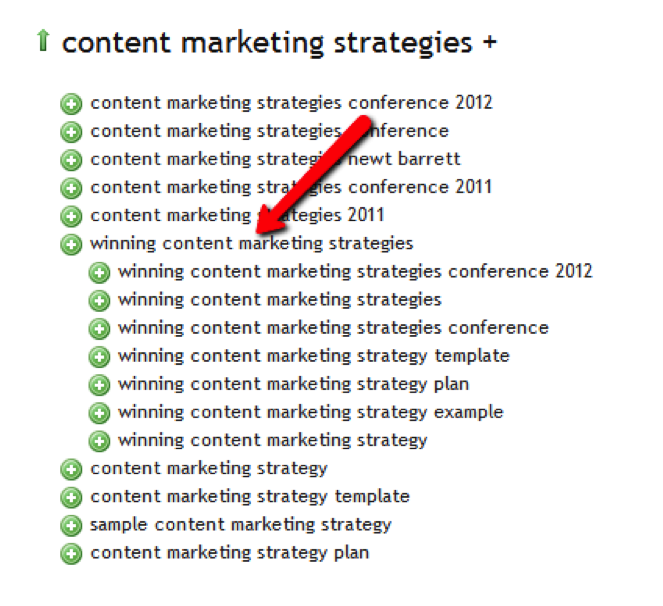
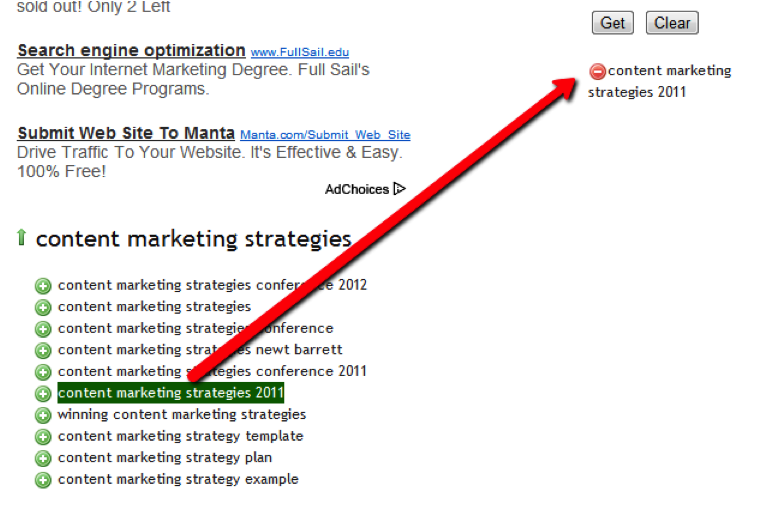
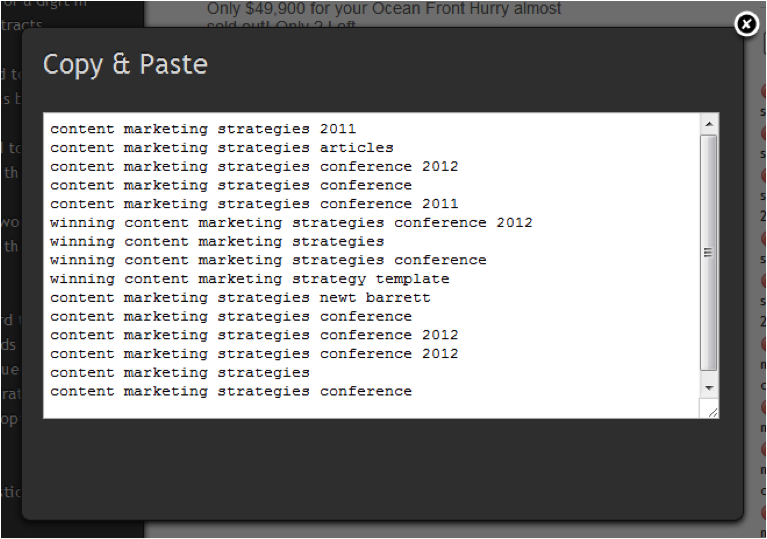

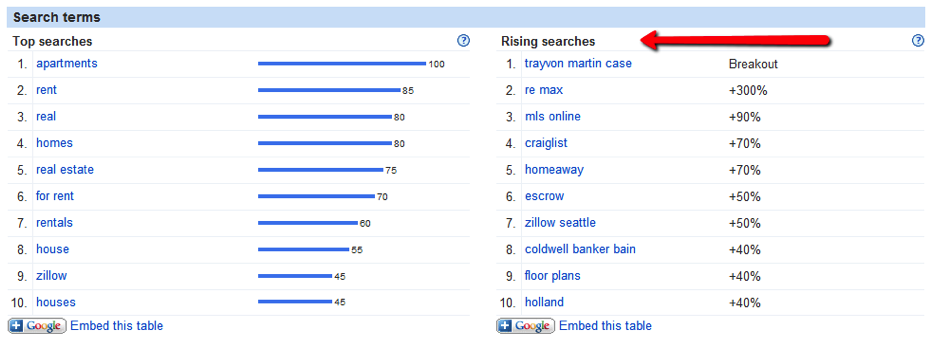



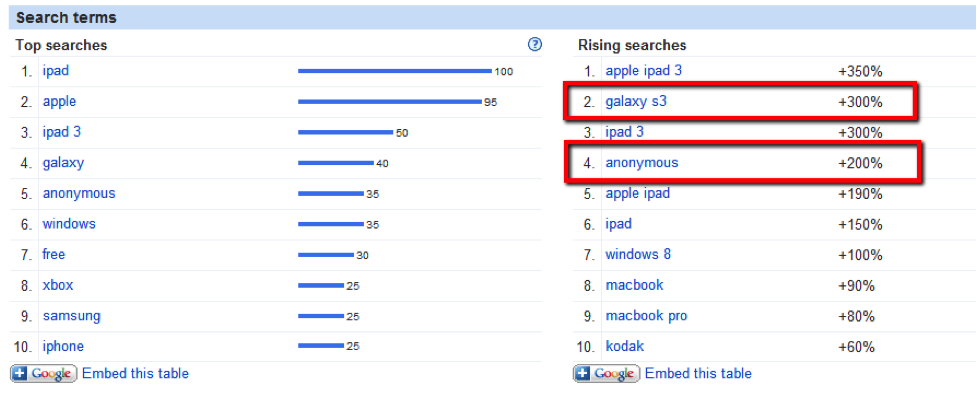

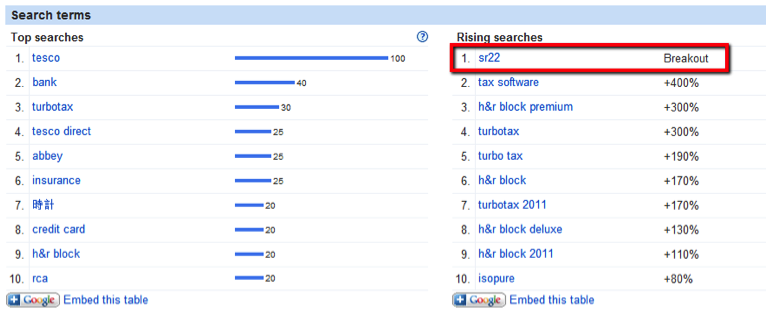




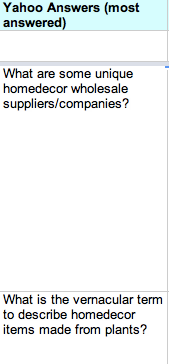
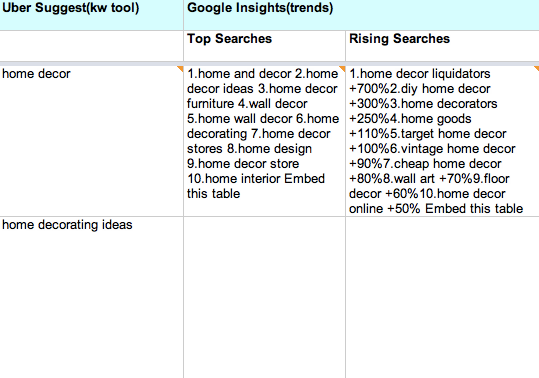
Этот комментарий был удален автором.
ОтветитьУдалить